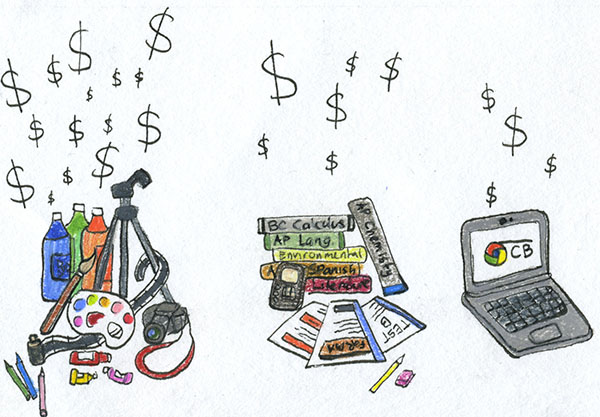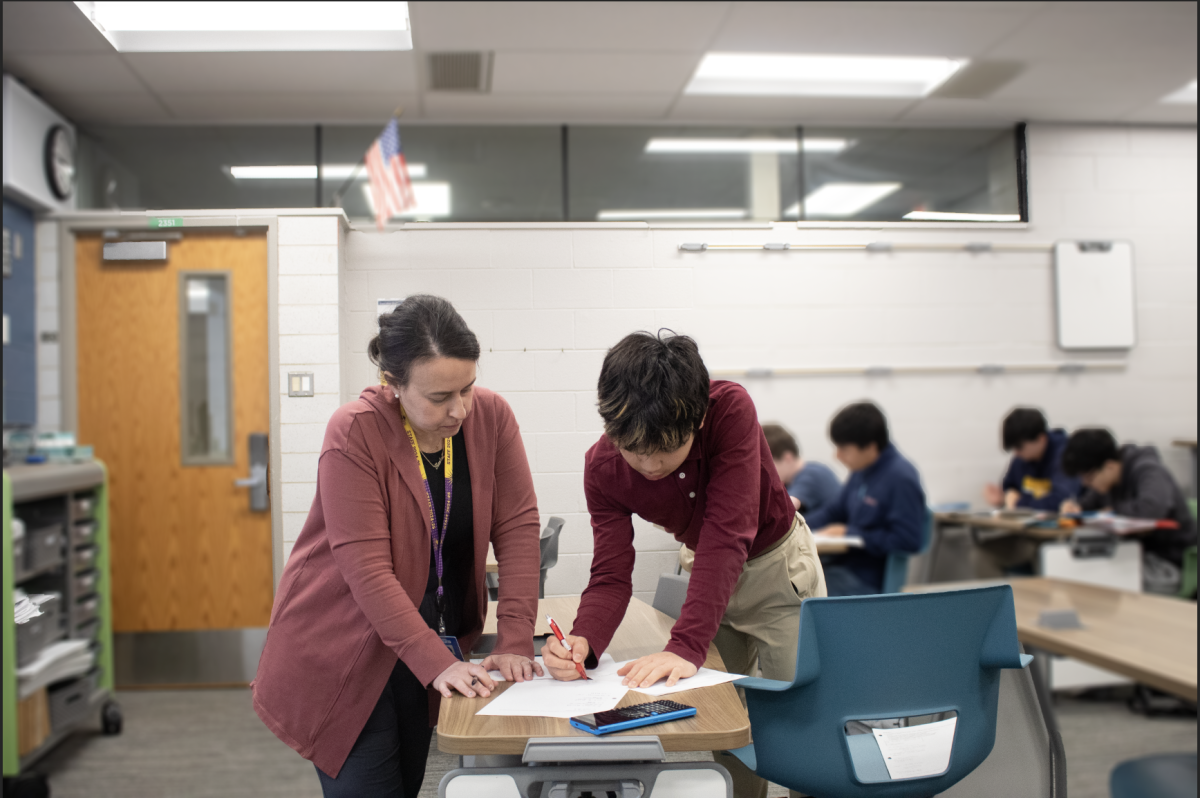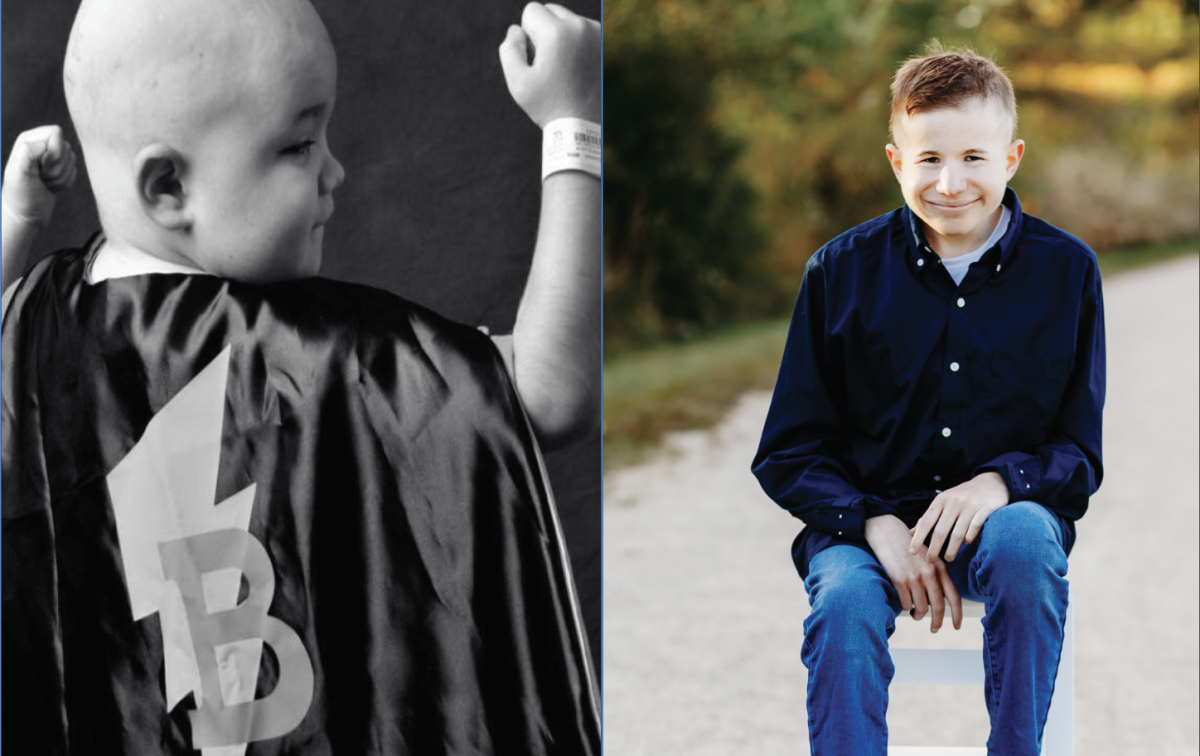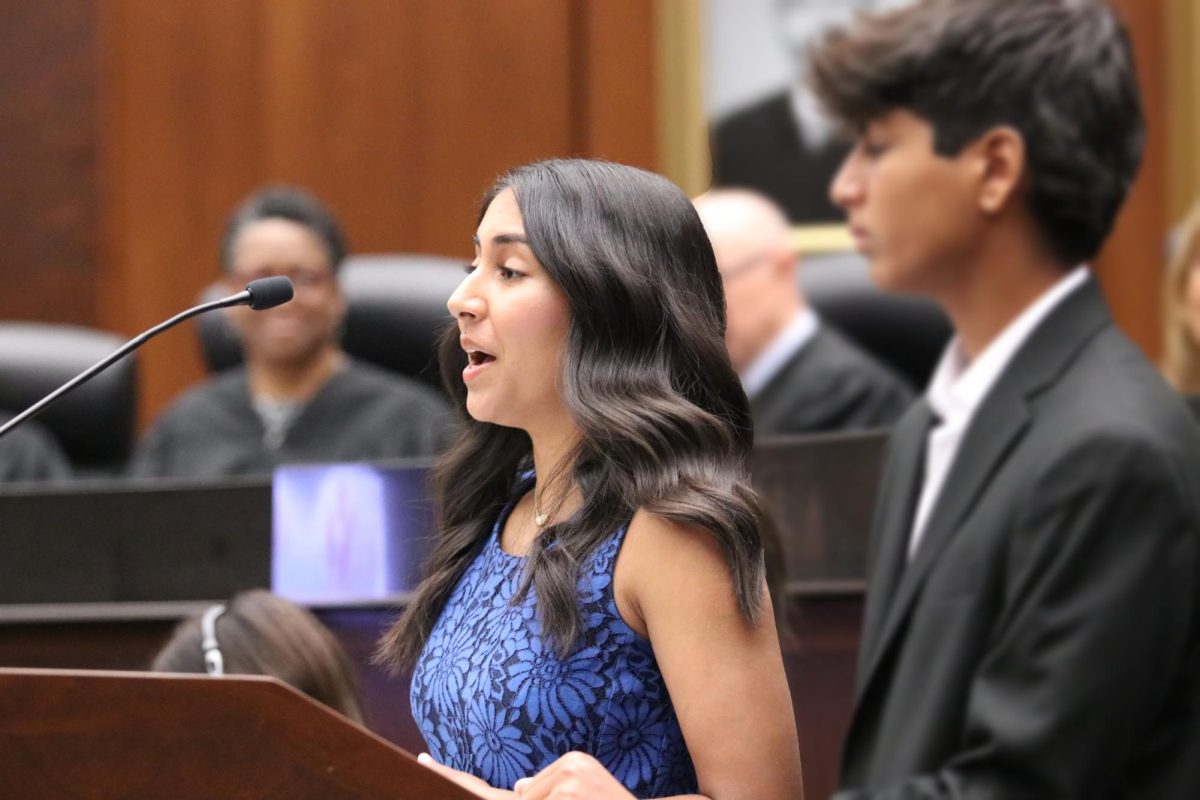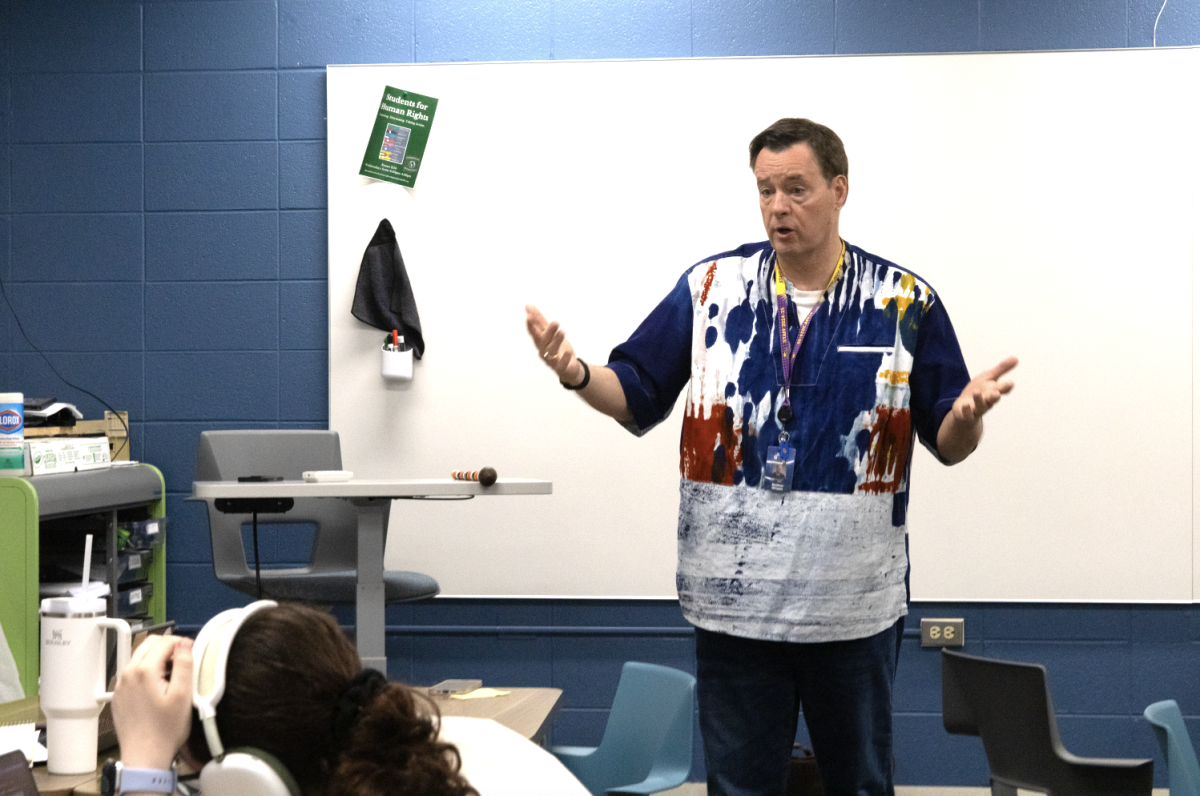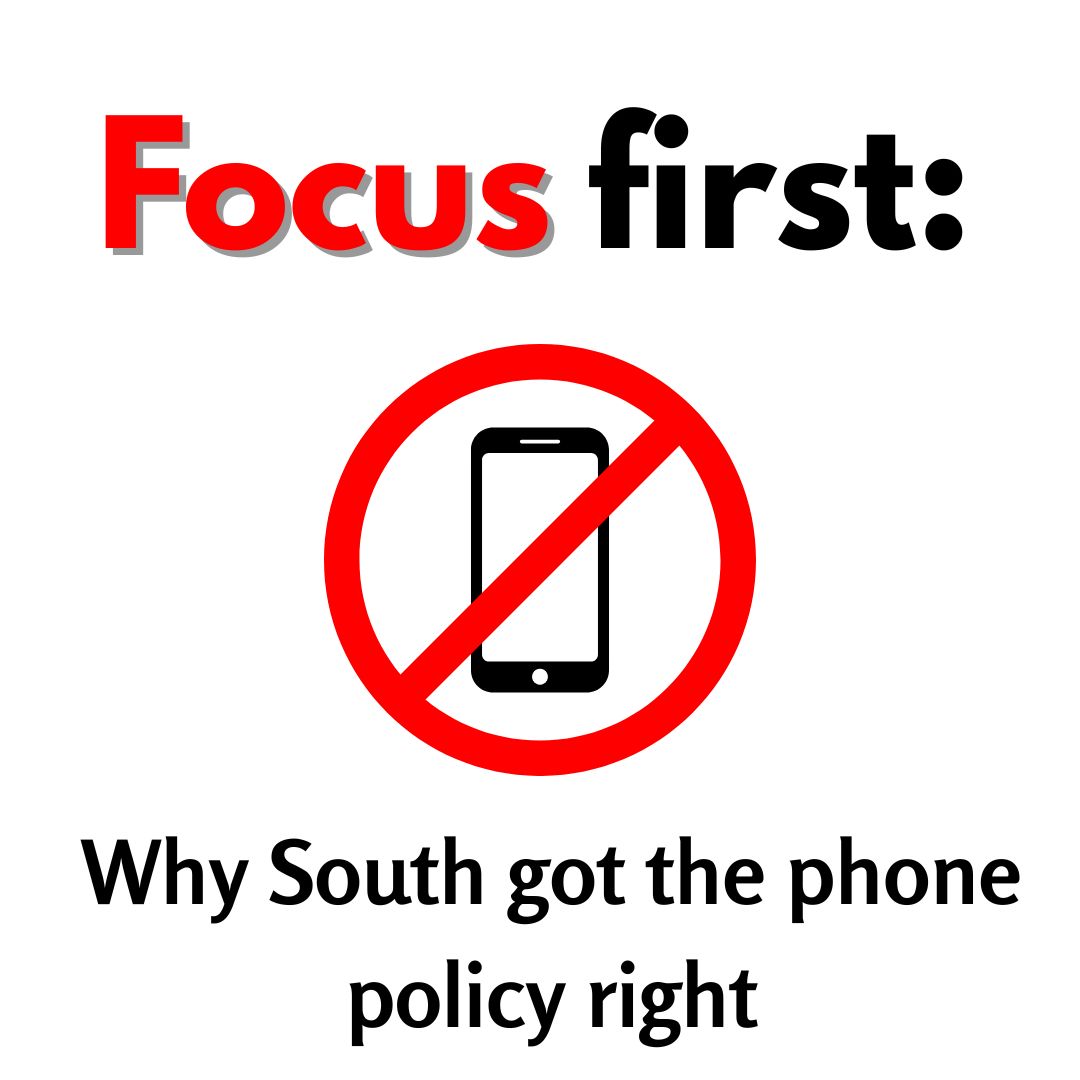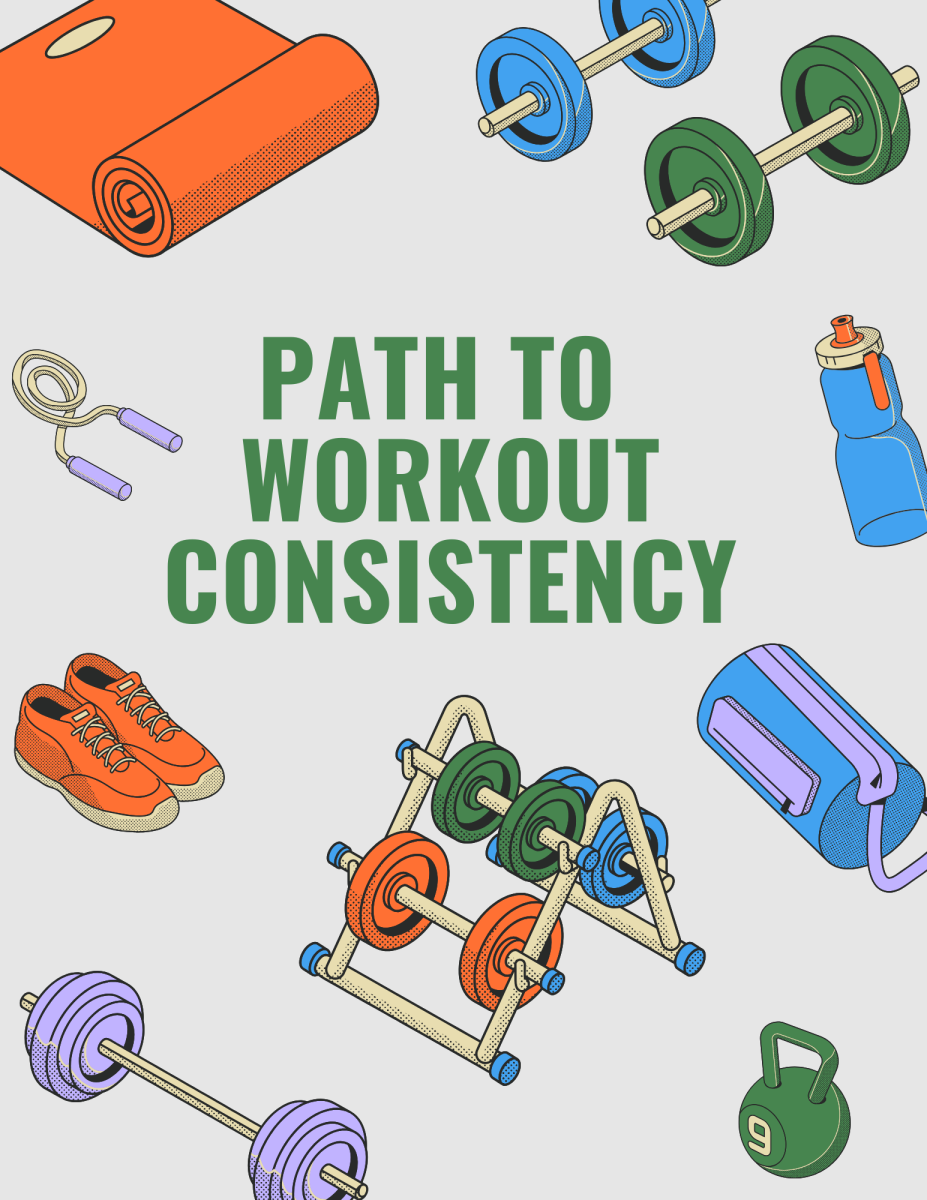Before school begins each year, the South Bookstore is busy assisting students in the various fees for specific items for each class. Alissa Frederick, GBS alum and manager of the bookstore, must keep things organized to allow students to purchase their items smoothly.
According to Frederick, art classes at South are some of the most expensive electives.
“Photography [is one of the most expensive electives at South],” Frederick said. “Photography supplies are super expensive for the buyers to buy, so when we re-sell them they become more expensive. The class itself also has a fee for materials that you use in the classroom that the teacher provides.”
Kits are crucial, yet expensive, for each class because they are necessary for the curriculum of the class, according to Frederick.
“Painting kits are pretty expensive–we sell them for about 50 dollars,” Frederick said. “Jewelry kits [are] about 45 dollars. The [electives] that you don’t use materials in are not as expensive. It becomes expensive for kids that are taking [different kinds] of art classes.”
Frederick elaborated by saying Driver’s Education is another expensive elective.
“It is less expensive here than if you were to take it privately at a Viking or [an] Adam’s School of Driving,” Frederick said. “[Driver’s Ed costs around] 350 dollars and that is by far the most expensive because Driver’s Ed [is important].”
Furthermore, the more advanced classes are, the more expensive they become, according to Frederick.
“For AP classes, you pay 90 dollars per test that you take,” Frederick said. “That’s super expensive, [especially] for students that are in all AP classes. There was a student that came in a few weeks ago who payed [around] 560 dollars to take some tests. I joked around with him saying, ‘It’s expensive to be so smart.’”
Frederick also explained that higher level classes are generally more expensive because of the costs of the textbooks.
“[For Honors classes], the textbooks are sometimes more expensive just because it’s more advanced material that they are learning,” Frederick said. “The classes that have textbooks are [going to] be more expensive than the classes that don’t.”
Despite the expenses of these classes, the fee provides a positive benefit for the student overall, according to Frederick.
“[Having a fee] is a benefit to the school because teachers are paying for some materials that they use in the classroom,” Frederick said. “They charge those fees to help offset those prices that the school is paying so that the materials in the class are a joint effort by all of the students.”
When a student is interested in pursuing a certain class, the expenses may be outweighed, according to Frederick.
“People are really passionate about the art classes, so they’ll take them,” Frederick said. “[Students] know the kits cost a lot of money, but it’s something they like to do [so it’s worth it]. There have been times when people know they’re expensive, but they don’t take [the classes] because they know it will cost them over 100 dollars.”
According to Frederick, if a student is unable to take a certain class due to the high costs, there is an option of financial aid assistance from the district.
Looking towards the future, Frederick noted the possible change from textbook-heavy environments to media-heavy environments.
“Because there are computers now, the movement is more towards digital. Within the next few years, it’s going to become more and more digital and [digital is] less expensive.”



